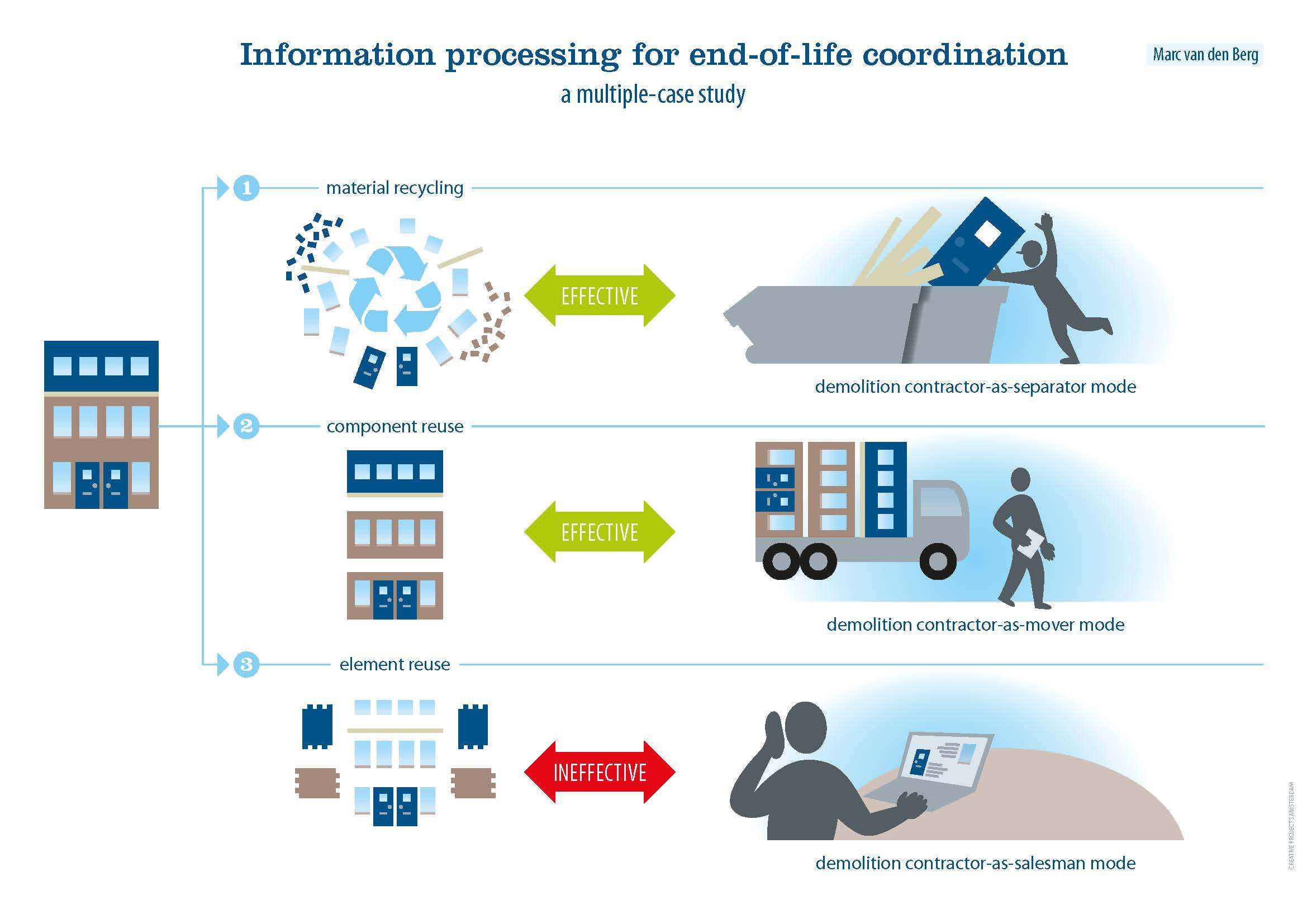We got our multiple-case study on coordinating different building end-of-life strategies published in Construction Innovation. The article elaborates on the uncertainties that demolition workers need to cope with in order to enable reuse or recycling.
Abstract
Purpose
The purpose of this study is to explore how demolition contractors coordinate project activities for buildings at their end-of-life. The organizations are thereby conceptualized as information processing systems facing uncertainty.
Design/methodology/approach
A multiple-case study methodology was selected to gain in-depth insights from three projects with different end-of-life strategies: a faculty building (material recycling), a nursing home (component reuse) and a psychiatric hospital (element reuse). Using a theory elaboration approach, the authors sought to explain how and why demolition contractors process information for end-of-life coordination.
Findings
End-of-life strategies differ in the degree of building, workflow and environmental uncertainty posed to the demolition contractor. Whether or not a strategy is effective depends on the (mis)match between the specific levels of uncertainty and the adopted coordination mechanisms.
Research limitations/implications
The explanatory account on end-of-life coordination refines information processing theory for the context of (selective) demolition projects.
Practical implications
The detailed case descriptions and information processing perspective enable practitioners to select, implement and reflect on coordination mechanisms for demolition/deconstruction projects at hand.
Originality/value
Reflecting its dual conceptual-empirical and inductive-deductive focus, this study contributes with new opportunities to explain building end-of-life coordination with a refined theory.
Cite
Van den Berg, M., Voordijk, H., & Adriaanse, A. (2020). Information processing for end-of-life coordination: a multiple-case study. Construction Innovation, 20(4). doi:https://doi.org/10.1108/CI-06-2019-0054
Full text
Read the full article in Construction Innovation.
